Experience the charm of Cat Cat Village with Vietpower Travel, where the timeless culture of the Hmong people meets the stunning beauty of Sapa’s mountains. Nestled in Muong Hoa Valley, this village offers terraced fields, waterfalls, and traditional crafts that reflect the spirit of Northwest Vietnam. Visitors can explore authentic workshops, taste mountain cuisine, and witness living traditions passed down for generations. A journey to Cat Cat Village is more than sightseeing — it’s an immersion into Vietnam’s cultural heritage.
Cat Cat Village is located in San Sa Ho Commune, about 2.5 kilometers from Sapa town. The village lies at the foot of the Hoang Lien Son Mountains, where three streams — Tien Sa, Golden, and Silver — converge to form the Cat Cat Waterfall.
This charming spot offers peaceful scenery typical of northern highlands: lush terraced rice fields, wooden stilt houses, and clear mountain streams winding through the valley. With its cool climate and close proximity to town, Cat Cat is one of the most accessible yet authentic Sapa Villages, allowing travelers to experience the rhythm of local life without venturing far from the main routes.
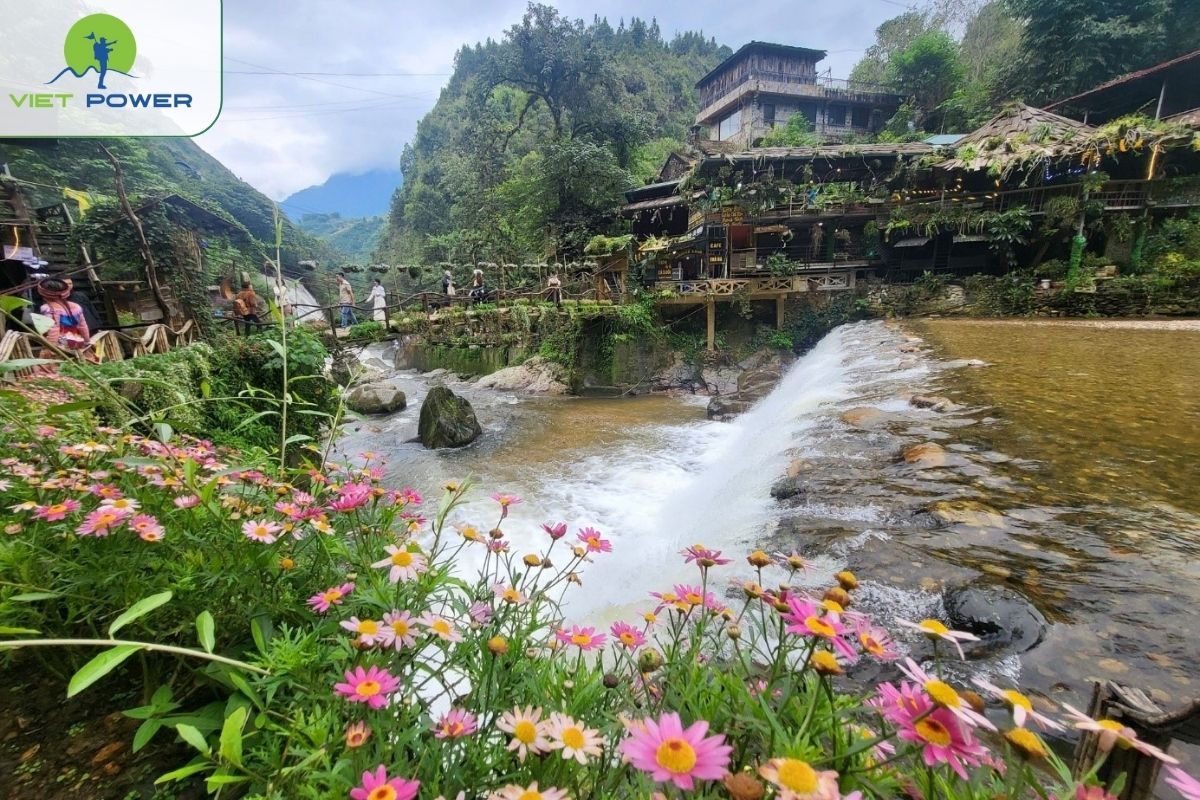
Few visitors realize that Cat Cat is home to Vietnam’s first hydroelectric power station, built by the French in 1925. This small station once supplied electricity to the colonial resort of Sapa, marking the early phase of modern infrastructure in the Northwest.
Today, travelers can still see the old stone walls and rusted turbines beside the waterfall. These quiet relics serve as a reminder of how French technology once blended with traditional Hmong life, leaving behind an unexpected historical layer within the tranquil landscape of Cat Cat Village.

Cat Cat Village was established in the 19th century by the Black Hmong ethnic group, one of Vietnam’s most skillful and creative mountain communities. Locals are well known for their colorful traditional attire, weaving techniques, and craftsmanship. Inside every Hmong house stands a traditional wooden loom where women spin hemp, dye it with indigo, and weave intricate brocade fabric.
These handwoven textiles are not only beautiful but also reflect the patience, artistry, and cultural pride that the Hmong people have preserved for generations.
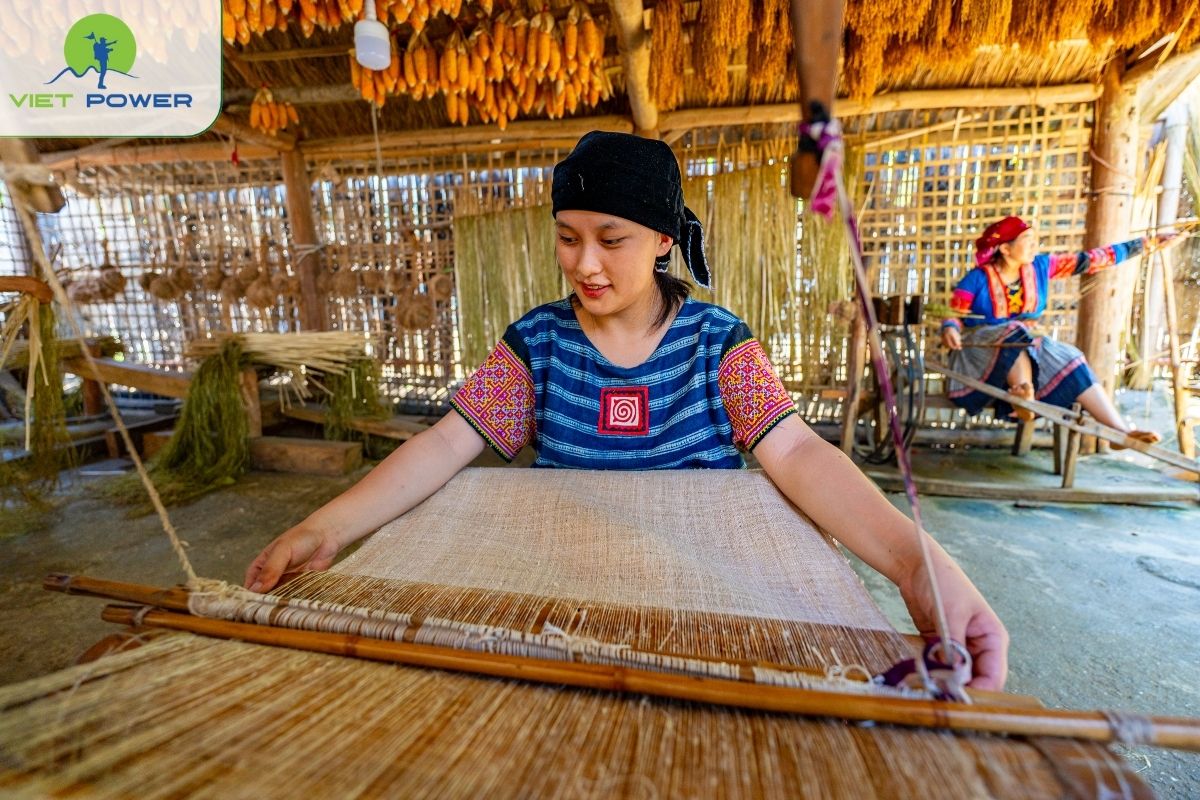
Among the village’s most fascinating customs is the “Abducting Wife” or “Wife-Pulling” ritual. In the past, this represented a traditional way for young men to express affection and propose marriage. Today, it is reenacted symbolically during festivals to celebrate Hmong courtship culture.
Another highlight is the Gau Tao Festival, held on the 7th day of the first lunar month. The celebration features bamboo flute melodies, umbrella dances, and folk games. It is a time when villagers pray for health, happiness, and good harvests.
Together, these customs reflect the deep community spirit and spiritual richness that define the Hmong identity and give Cat Cat Village its enduring charm among the highland landscapes of Sapa.
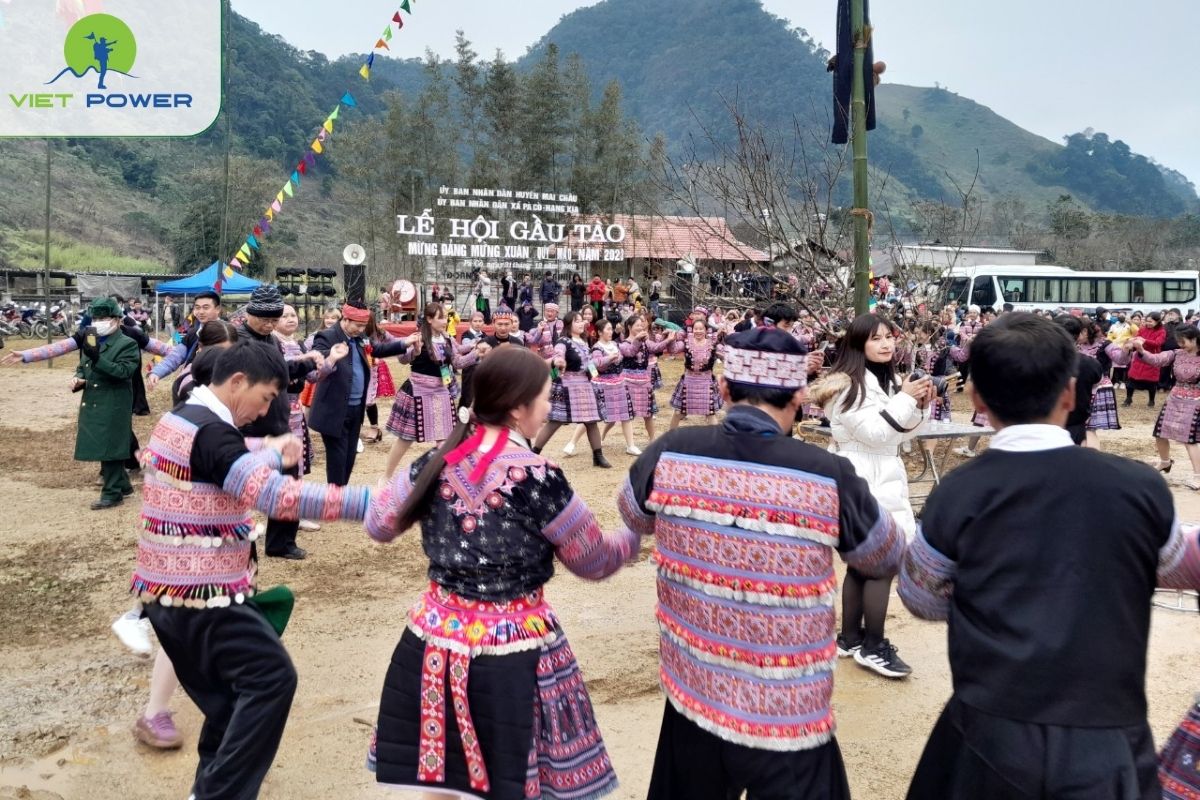
At the center of Cat Cat Village lies the Tien Sa Waterfall, where three mountain streams — Tien Sa, Golden, and Silver — meet and cascade down into a clear pool. The sound of rushing water blends with the rustle of trees, creating a peaceful, natural melody that draws visitors to pause and take in the scene.
Just a few steps away stands the old French hydroelectric station, preserved as a reminder of early colonial engineering. The weathered stone structure and surrounding bridges offer excellent photo opportunities, especially in the soft morning light.

Walking through the village, travelers can watch Hmong women demonstrate the Beeswax Batik Resist Dyeing Technique. This traditional method involves heating natural beeswax, dipping a bamboo pen into it, and drawing decorative motifs on handwoven hemp fabric before soaking it in indigo dye.
Once the wax is removed, the cloth reveals beautiful patterns that express cultural symbols such as flowers, leaves, and geometric shapes. Visitors can also join a short batik workshop to try painting their own piece — a memorable way to appreciate the craftsmanship that defines Hmong textile art.
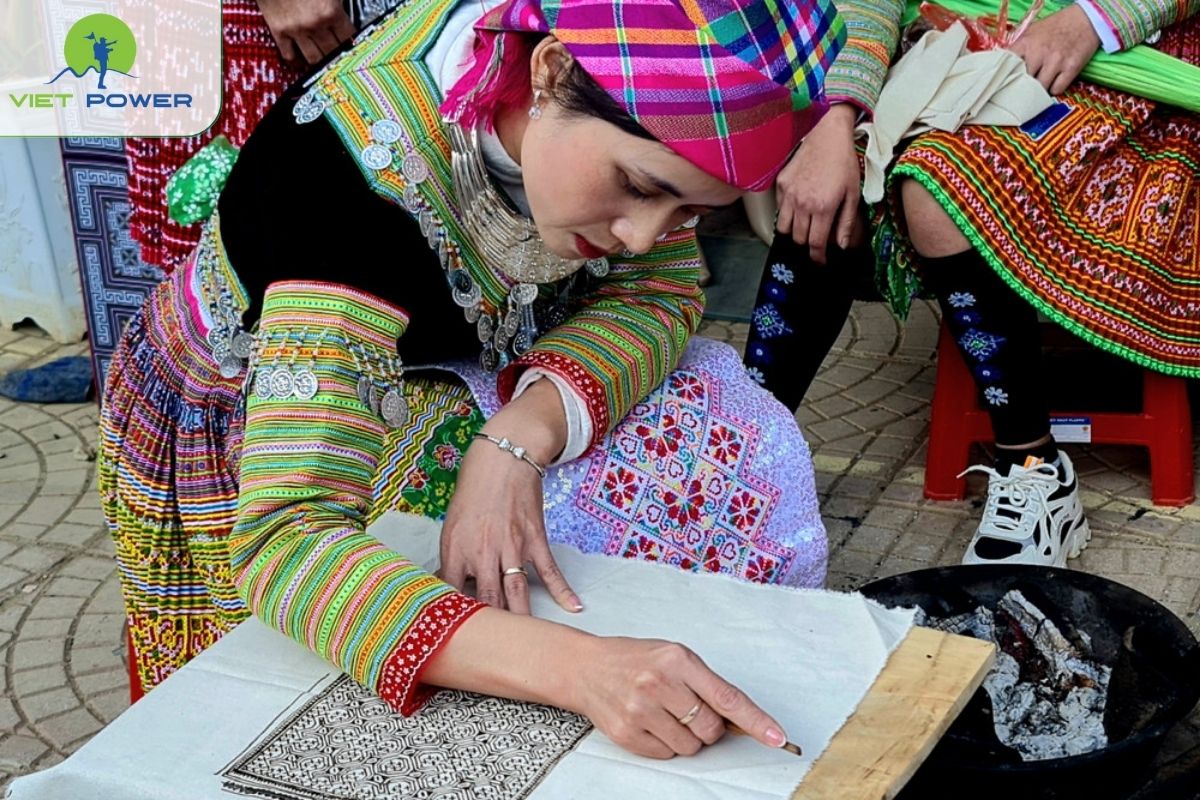
Food lovers will find Cat Cat Village a treasure of mountain flavors. Locals proudly serve corn wine fermented with native herbal yeast — a drink often shared during celebrations or offered to guests as a gesture of hospitality.
Accompanying the wine are signature dishes such as smoked buffalo, grilled chicken, and bamboo-tube rice cooked over open fires. Many families open their kitchens to visitors, allowing them to see how recipes have been passed down through generations.
Dining here offers more than a meal — it’s an insight into how the Hmong people connect family, food, and culture in their everyday lives.
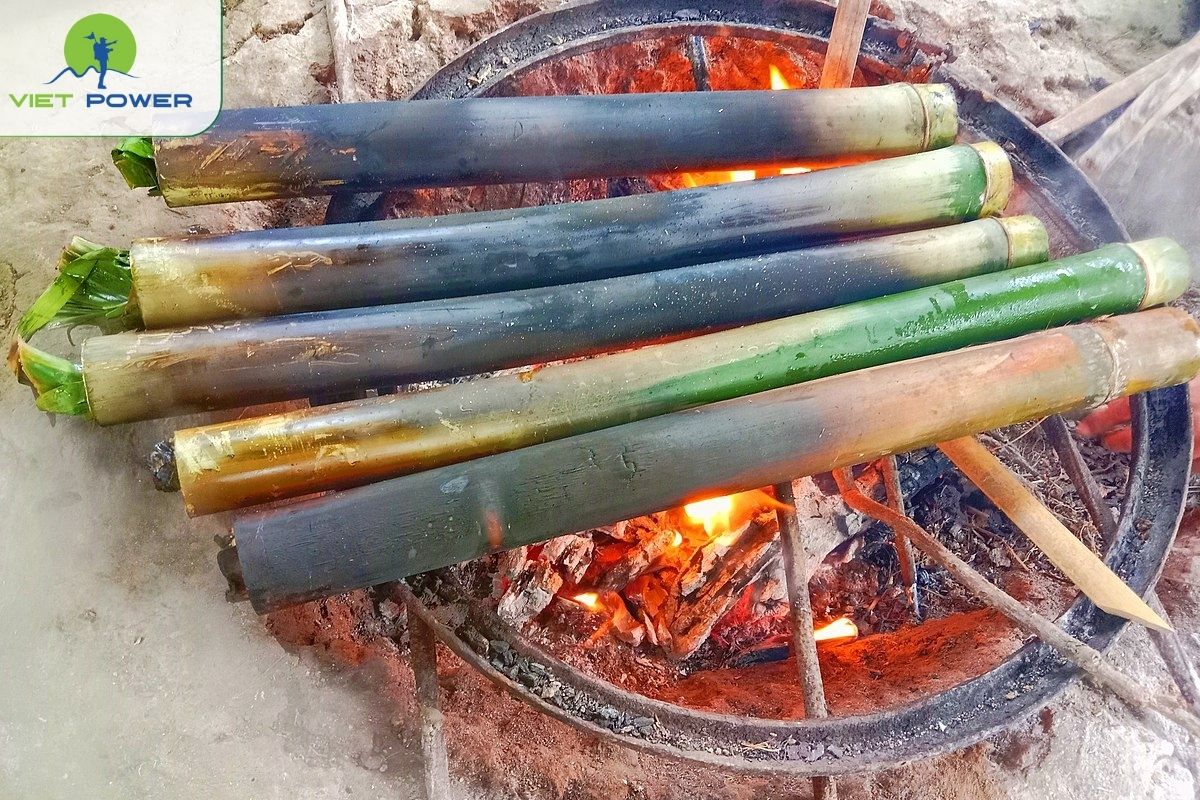
Reaching Cat Cat Village is part of the adventure itself. The route from Sapa town takes about 45 minutes on foot, following a gentle downhill trail lined with rice terraces and views of the Hoang Lien Son mountains. For those who prefer convenience, a quick motorbike ride or taxi can bring you to the entrance gate in minutes.
Many travelers extend their walk into a multi-village trek, connecting Cat Cat → Y Linh Ho → Lao Chai → Ta Van. This path offers a vivid picture of mountain life and the cultural variety of Sapa Villages, from traditional workshops to peaceful valley views.

Cat Cat Village is one of Sapa’s most photogenic destinations. The top viewpoints include the Si Bridge and A Lu Bridge, the Cat Cat Waterfall, and the French Power Station ruins. For something more romantic, head to the Rose Garden “Bird Nest” — a wooden structure overlooking the valley where the sunrise and sunset light make the landscape glow.
In the morning, soft mist wraps around the terraces, perfect for wide landscape shots. By late afternoon, warm sunlight turns the entire valley golden — a perfect finish to a day spent exploring the charm of Cat Cat Village.
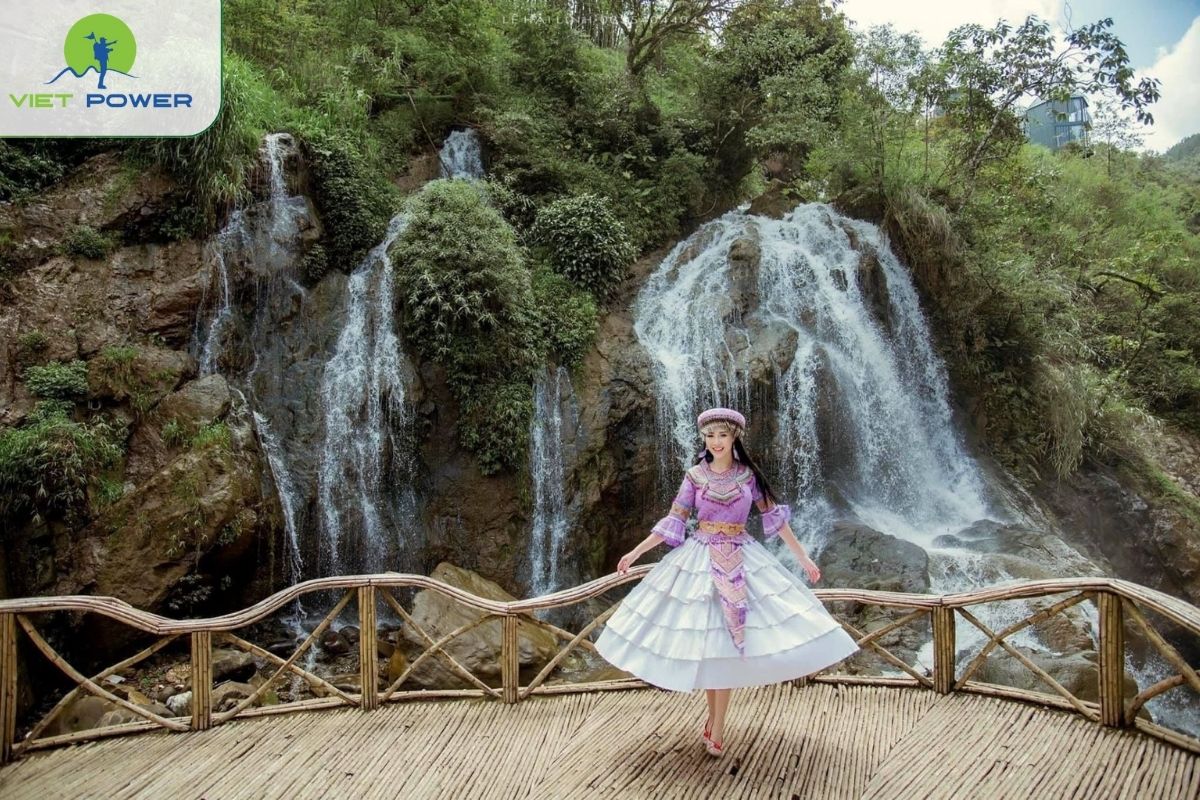
To explore Cat Cat Village, visitors are required to purchase an entrance ticket at the main gate:
The village welcomes guests daily from 5:00 AM to 10:00 PM, giving travelers plenty of time to enjoy both early morning tranquility and evening cultural shows.
For a smoother trip, you can arrive early to avoid crowds, or stay nearby overnight to experience the peaceful mountain atmosphere shared by many Sapa Villages in the area.
The landscape of Cat Cat changes beautifully throughout the year, offering different experiences for each season:
Each season carries its own charm — whether you prefer vibrant colors, peaceful harvest scenes, or cool mountain mist, Cat Cat always feels inviting.
Cat Cat Village is a living community, so respectful behavior is appreciated. Here are some simple tips to make your visit pleasant and mindful:
1. How far is Cat Cat Village from Sapa town?
Cat Cat is about 2.5 kilometers from the center of Sapa town — a short and enjoyable 40-minute walk or a 10-minute motorbike ride.
2. Is the French hydroelectric station still open to visitors?
Yes. The French-built hydroelectric power station, constructed in 1925, still stands near the Cat Cat Waterfall. Visitors can see the preserved turbines and stone structures that once powered the old Sapa resort.
3. What makes the Hmong houses unique?
Traditional Hmong homes in Cat Cat are made from Pomu wood and feature three doors — one main entrance and two smaller side doors. The main door is opened only during special events like weddings, funerals, or New Year celebrations, reflecting the village’s respect for tradition and privacy.
4. When does the Gau Tao Festival take place?
The Gau Tao Festival is celebrated on the 7th day of the first lunar month. It’s the biggest annual event for the Hmong people, filled with dance, music, folk games, and prayers for good health and fortune.
5. Can I join a weaving or beeswax workshop?
Yes. Many households offer hands-on workshops where you can try beeswax batik painting or traditional weaving. Local artisans guide visitors through the process — from drawing patterns with melted wax to dyeing fabric with indigo — allowing you to create your own small souvenir.
From peaceful trekking trails to the rhythmic sounds of weaving looms, Cat Cat Village captures the essence of highland life. Travelers seeking both nature and culture will find every step here rewarding — from its ancient hydroelectric station to vibrant Hmong festivals. Plan your visit with Vietpower Travel and uncover the heart of Sapa, one of the most captivating Vietnam Tourist Attractions that connects tradition, landscape, and authentic local experience.